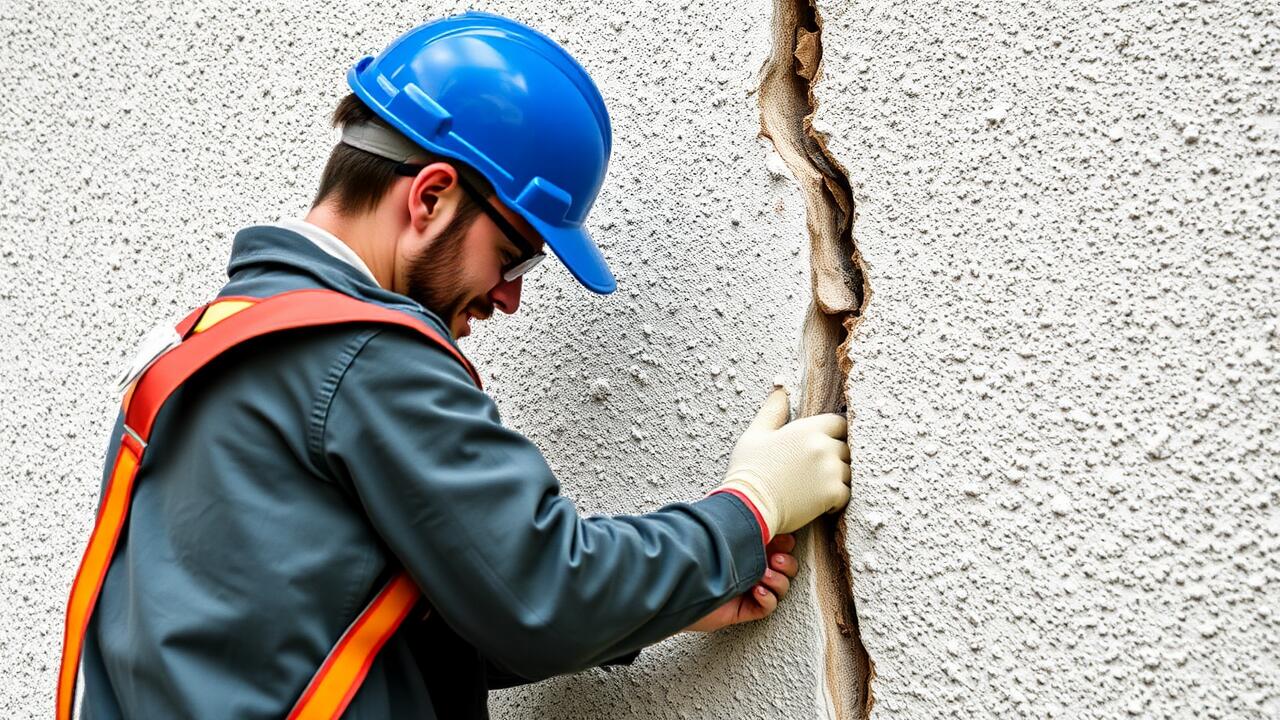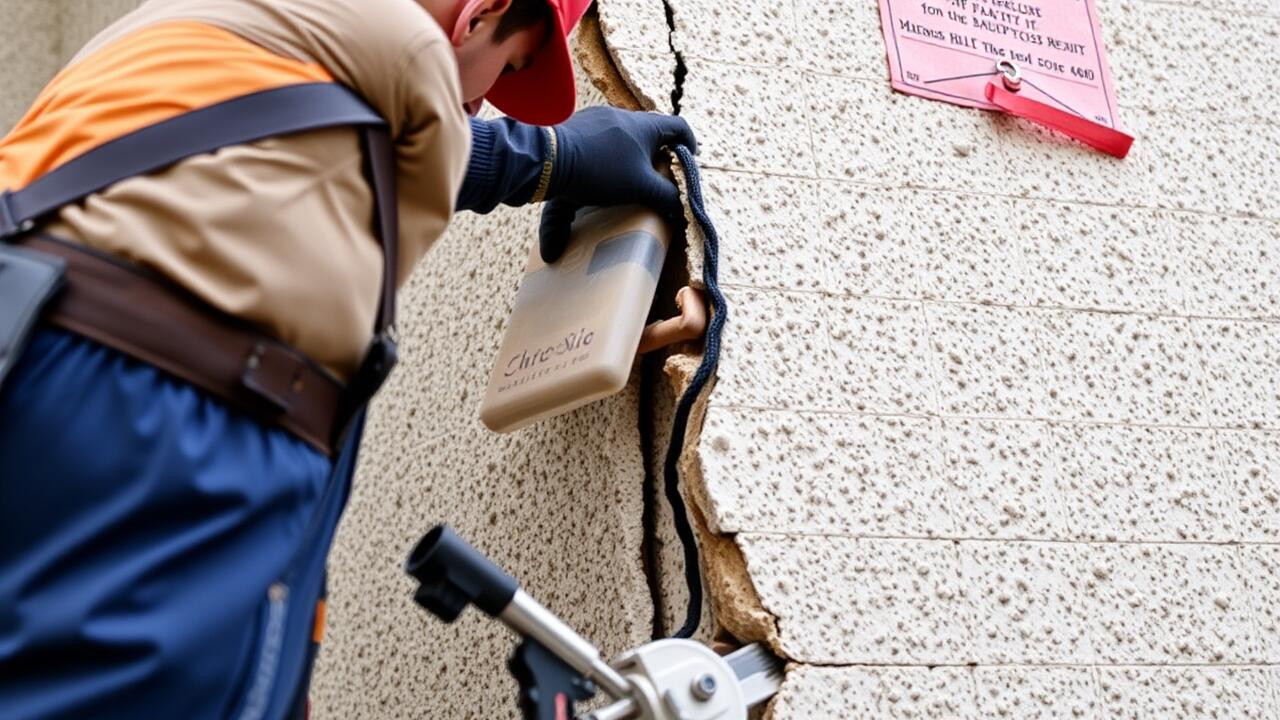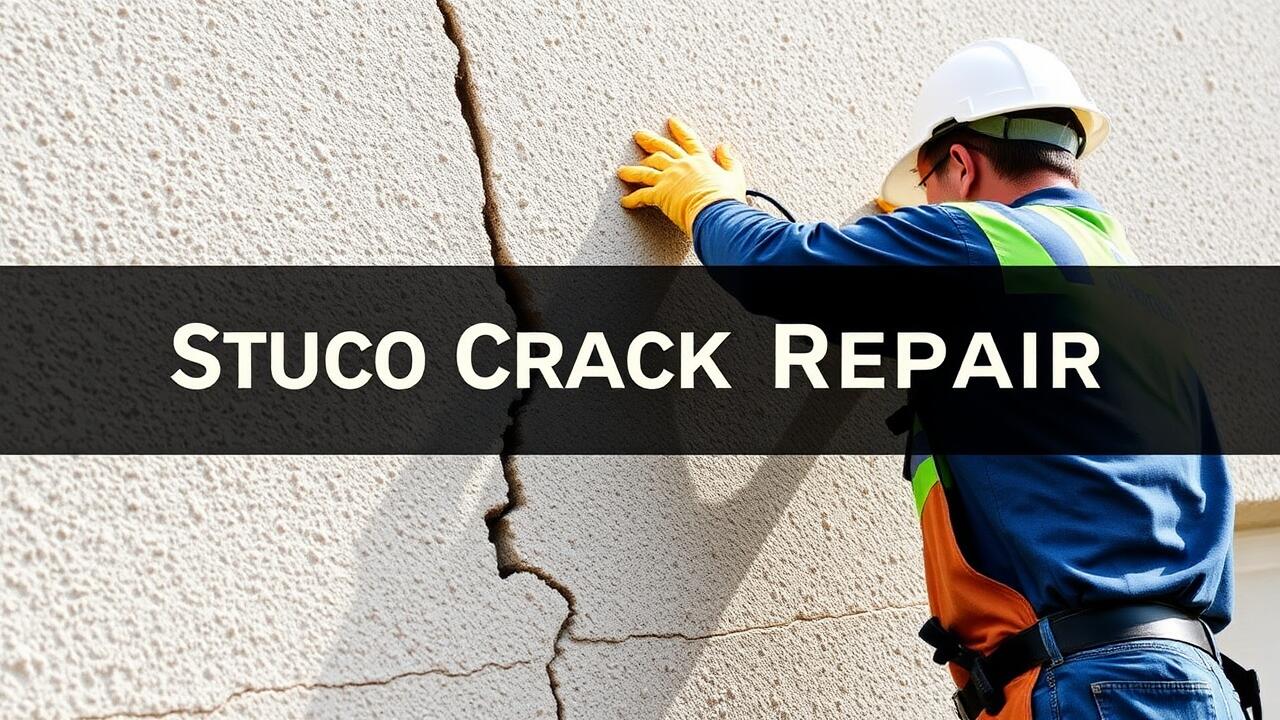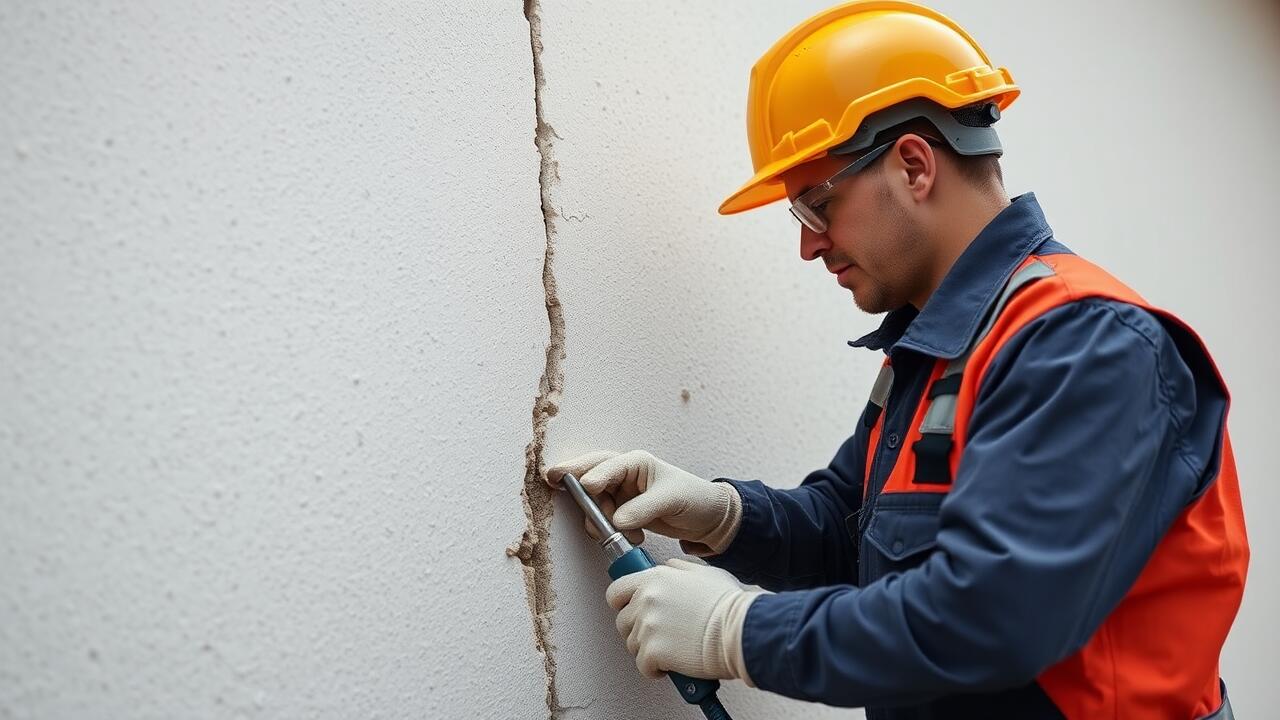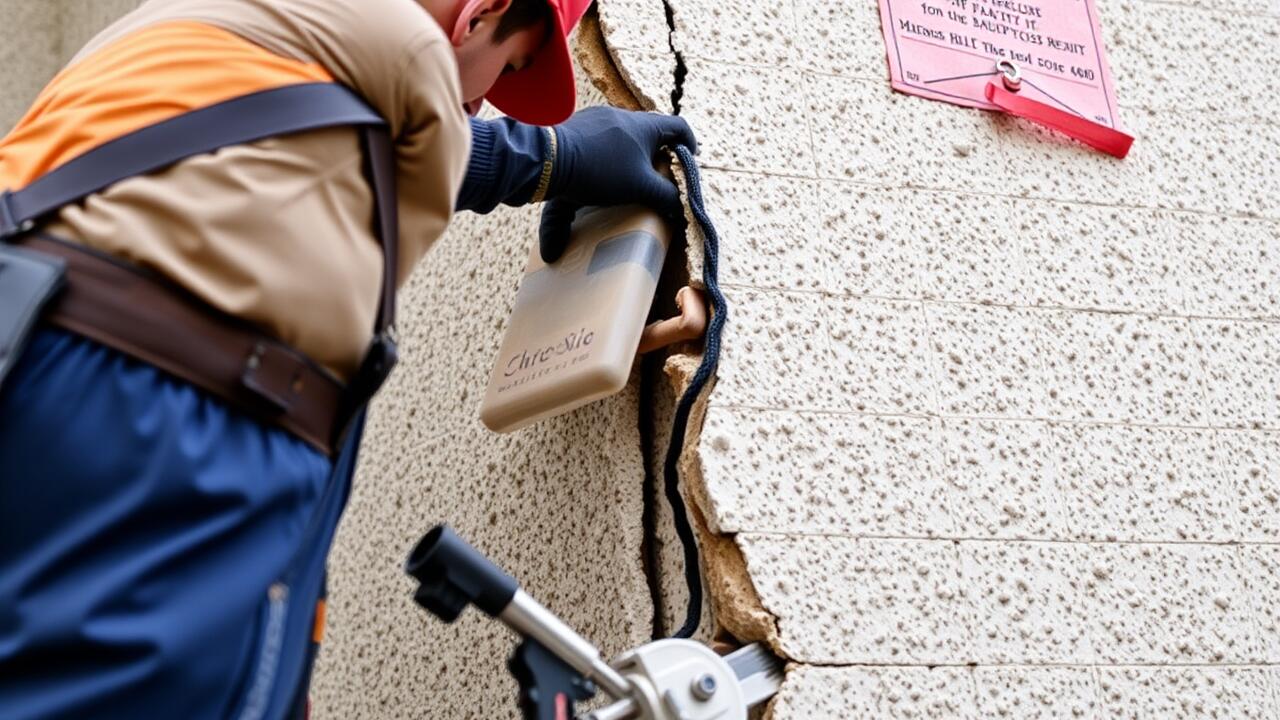
Alternatives to Stucco Replacement
Homeowners looking to maintain the aesthetic appeal of their property might find alternatives to full stucco replacement beneficial. Options such as resurfacing, patching, or implementing a fresh coat of paint can often revive the appearance of stucco without the associated costs of a total overhaul. These methods can address minor issues while significantly extending the life of existing stucco surfaces.
For those dealing with extensive damage but hesitant to replace, professional services for Stucco Crack Repair in Van Nuys, Los Angeles, present a practical solution. Skilled contractors can assess the extent of damage and recommend targeted fixes that can reinforce the structure while enhancing its visual appeal. Repairing rather than replacing can not only save money but also allow homeowners to preserve the character of their homes.
Repair vs. Replacement
Determining whether to repair or replace stucco largely depends on the extent of damage and the overall condition of the surface. Minor cracks or surface imperfections can often be addressed through straightforward repair methods. This approach is typically more cost-effective and less invasive, allowing homeowners to maintain the existing structure while restoring its appearance. Employing services like Stucco Crack Repair in Van Nuys, Los Angeles, can ensure the repairs are completed professionally and effectively.
On the other hand, if the stucco shows signs of widespread damage, such as moisture issues or substantial cracks, replacement may be the better long-term solution. In such cases, patching may only provide a temporary fix. Choosing to replace the stucco can enhance the home's curb appeal and structural integrity. It's essential to assess the underlying issues contributing to the deterioration to make an informed decision regarding repairs versus full replacement.
The Replacement Process Overview
Replacing stucco involves several critical steps to ensure a successful outcome. The first stage typically includes an assessment of the existing stucco’s condition to determine whether replacement is truly necessary. Professionals will look for signs of underlying damage that could complicate the replacement process. Once the assessment is complete, preparations for the removal of the old stucco can begin. This may include protecting surrounding areas to avoid damage during the project.
Following the removal phase, the wall’s surface must be properly prepared for the new stucco application. This may involve addressing any damage to the underlying structure, such as wood framing or insulation. After ensuring everything is in good condition, the new stucco can be applied in layers, with careful attention to drying times and techniques. For those in need of services before replacement, options such as Stucco Crack Repair in Van Nuys, Los Angeles, can provide necessary fixes that extend the life of existing stucco, allowing homeowners to make more informed decisions regarding replacement timelines.
Steps to a Successful Installation
To ensure a successful stucco installation, proper preparation of the surface is essential. This includes cleaning the existing walls to remove dirt, debris, or any previous coatings that may hinder adhesion. It is crucial to check for any underlying issues, such as water damage or structural problems. Addressing these concerns upfront can help prevent complications later in the process.
After preparing the surface, the installation can begin. Begin by applying a moisture barrier to protect against water infiltration. Follow this with the installation of metal lath to provide a solid base for the stucco. Finally, mix and apply the stucco in layers, ensuring each section dries properly before applying the next. For those facing specific issues like cracks, professionals may recommend services such as Stucco Crack Repair in Watts, Los Angeles to maintain integrity throughout the installation.
Cost Considerations for Stucco Replacement
When planning for stucco replacement, understanding the financial implications is crucial. The costs can vary significantly based on several factors, including the size of the area being covered, the type of stucco used, and labor expenses. Homeowners should also consider additional costs that may arise from any necessary preparatory work or underlying issues that need addressing before installation. It's wise to obtain multiple quotes from contractors to gauge the average market rate and ensure budget adherence.
In addition to the direct costs associated with replacement, future maintenance and potential repairs should also be factored into the overall budget. Investing in quality materials and skilled workmanship during the initial installation can help minimize long-term expenses. For example, seeking services like Stucco Crack Repair in Van Nuys, Los Angeles, can prevent small issues from escalating into major repairs down the line. Planning for these aspects not only protects the home’s aesthetic appeal but also helps maintain its value over time.
Budgeting for Your Project
Budgeting for a stucco replacement project requires a careful assessment of both material and labor costs. On average, homeowners can expect to pay a range of prices based on factors such as the size of the area needing replacement and the chosen materials. It's essential to get multiple estimates and consider any additional expenses that may arise during the project, such as the removal of existing stucco or repairs to underlying structures that could affect your overall budget.
When planning your finances, it is important to set aside a contingency fund for unexpected issues that may emerge. For instance, if your stucco has been damaged due to moisture, hidden problems may require immediate attention before you proceed with the replacement. Investing in professional services like stucco crack repair in Van Nuys, Los Angeles, can save you money in the long run, ensuring that the foundation of your home remains solid and avoiding further costly repairs in the future.
FAQS
What are the signs that indicate stucco needs to be replaced?
Signs that stucco may need to be replaced include extensive cracking, water damage, mold growth, significant discoloration, and areas where the stucco is pulling away from the wall.
How does stucco repair differ from replacement?
Stucco repair involves fixing localized issues, such as small cracks or water damage, while replacement entails removing the existing stucco and installing new material. The decision often depends on the extent of the damage.
What are some alternatives to stucco replacement?
Alternatives to stucco replacement include repairing existing stucco, applying a new layer of stucco, or using different siding materials such as vinyl, fiber cement, or brick.
What is the general process for replacing stucco?
The replacement process typically involves assessing the condition of the existing stucco, removing damaged sections, preparing the surface, and installing new stucco according to manufacturer guidelines.
How can I budget for stucco replacement?
To budget for stucco replacement, consider factors such as the size of the area, the type of stucco material, labor costs, and any additional repairs needed. It's advisable to get multiple quotes from contractors to ensure accurate budgeting.
